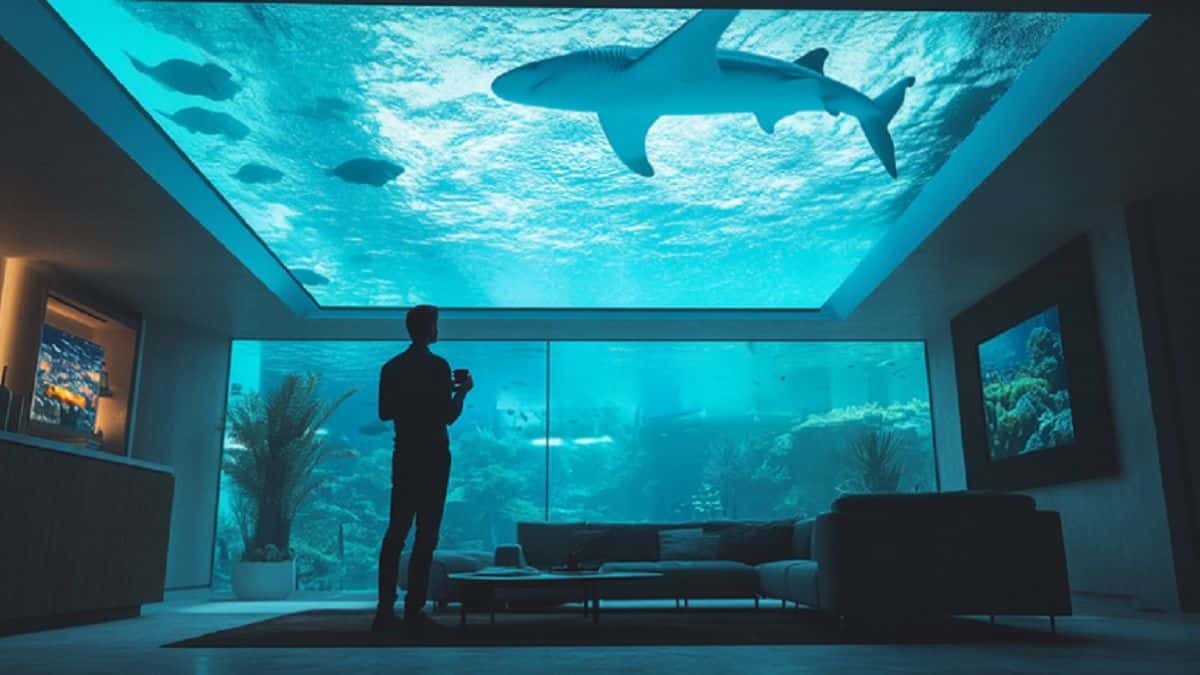Rüdiger Koch, a 59-year-old aerospace engineer, has recently shattered records by residing in an underwater habitat for an astonishing 120 days. This groundbreaking achievement took place off Panama’s Puerto Lindo coast, where Koch lived 11 meters below the surface in a compact 30-square-meter capsule. His remarkable underwater stay wasn’t just a personal challenge but represents a significant step toward exploring sustainable underwater living solutions.
Revolutionary underwater living experiment
On January 24, 2025, Koch emerged from his underwater home after completing what now stands as the world’s longest continuous underwater residence. During his four-month stay, he endured numerous challenges while testing the viability of subaquatic habitation. His specialized capsule included basic amenities like a bed, computer, television, and exercise equipment to maintain physical health.
The underwater dwelling was ingeniously powered by solar panels connected to the surface, with satellite internet providing Koch a vital link to the outside world. Despite these technological advancements, he faced notable hardships, including the absence of shower facilities throughout his extended stay.
Koch’s experiment goes beyond personal achievement – it’s part of a broader vision from Ocean Builders, a company he co-founded that focuses on developing sustainable underwater housing solutions. This initiative addresses pressing global challenges including climate change impacts, rising sea levels, and land-based population density issues.
“The future may well exist beneath the waves,” Koch stated after completing his record-breaking stay. “We’ve demonstrated that humans can adapt to underwater environments for extended periods with relatively simple technology.”
12 Warning signs you have too much mental strength (and it's destroying your life)
A 500-Kilogram Metal Ring Plummeted Over Kenya, Confirming Long-Held Suspicions
Breathing innovation that made it possible
The most fascinating aspect of Koch’s underwater residence was his breathing mechanism – a remarkably straightforward yet effective system. Rather than relying on complex equipment or constant tank replacements, Koch implemented a surface-to-depth air delivery system that continuously pumped fresh air from above.
This ingenious setup maintained appropriate pressure levels within the capsule, allowing Koch to breathe normally despite being submerged for four months. The simplicity of this solution highlights how engineering fundamentals can solve seemingly impossible challenges.
Key components of Koch’s breathing system included:
- Surface-mounted air compressors
- Specialized pressure regulation valves
- Redundant delivery tubes for safety
- Air quality monitoring equipment
- Emergency backup systems
While the technical aspects were crucial, equally important was Koch’s mental resilience. Living in isolation underwater presented unique psychological challenges that required careful management. His aerospace background proved invaluable in handling the confined space and isolation reminiscent of space missions.
How to Stop Your Neighbor from Using Your WiFi Without Permission
How Do You Carry Your Bag? What It Says About How Others See You
Future prospects for underwater habitation
Koch’s successful experiment has accelerated interest in underwater living possibilities. His business partner Grant Romundt emphasizes that their goal extends beyond survival demonstrations – they’re establishing the foundation for permanent underwater communities that could provide solutions to environmental challenges.
Several organizations are now exploring similar concepts, including the UK’s “Deep” initiative, which aims to create permanent underwater housing by 2027. These developments suggest we may be witnessing the early stages of a significant shift in how humans approach coastal living and environmental adaptation.
| Underwater Habitat Challenges | Potential Solutions |
|---|---|
| Water pressure management | Advanced structural engineering and flexible reinforcement |
| Resource sustainability | Solar power, water recycling, waste management systems |
| Environmental impact | Eco-conscious construction methods and materials |
| Long-term habitability | Psychological support systems and community planning |
However, significant challenges remain before widespread underwater habitation becomes reality. These include construction costs, maintenance requirements, and environmental impact concerns. Any future developments must balance technological innovation with ecological preservation to ensure underwater habitats don’t harm the marine environments they occupy.
As Koch’s experiment demonstrates, human ingenuity continues pushing boundaries of what’s possible. This record-setting underwater stay may represent just the beginning of humanity’s next frontier – living harmoniously beneath the waves.







